#margaret wycherly
Explore tagged Tumblr posts
Text

#The Loves of Carmen#Rita Hayworth#Glenn Ford#Ron Randell#Victor Jory#Luther Adler#Arnold Moss#Joseph Buloff#Margaret Wycherly#Charles Vidor#1948
12 notes
·
View notes
Text

Walter Brennan as Pastor Pyle takes the York family out for a ride in an original publicity still for Sergeant York (1941) with June Lockhart, Margaret Wycherly and Joan Leslie.
3 notes
·
View notes
Text
The Man With a Cloak

Edgar Allan Poe is credited with creating the American detective story, so putting him in a mystery-thriller would seem a natural idea. Right? Not judging by Fletcher Markle’s THE MAN WITH A CLOAK (1951, TCM). Joseph Cotten stars as a hard-drinking poet who calls himself Dupin and gets involved in the fight over dying expatriate Frenchman Louis Calhern’s will. Did he leave everything to his shady lady housekeeper, Barbara Stanwyck, or to the grandson who sent his fiancée (Leslie Caron) to beg for his support of the Second French Republic? The mystery is hardly as complicated as those in “The Murders in the Rue Morgue” or “The Purloined Letter,” and yet it still seems a leap when Cotten figures it out. But then, the whole film makes little sense. Why does Calhern plan to kill himself when he’s dying anyway? Why does Stanwyck flirt with Cotten? Does she think he can help her secure the inheritance? Is she attracted to him? Is she jealous of his friendship with Caron? Why has nobody in 1848 heard of Poe when he was already famous for his poetry and short stories? How can Cotton drink constantly and never get drunk? Why does the film treat the revelation of Cotton’s identity as a shock when anybody with a high-school education at the time would have known who he was within 20 minutes? Why did the studio and good actors look at this script and say, “This seems like a great idea?” Calhern, in a role offered to Lionel Barrymore, and Margaret Wycherly, as the cackling cook, come off best. They just disregard all the idiocy and have a high time nibbling on the scenery. Stanwyck and Jim Backus, as a friendly tavern keeper, manage to make the faux poetic dialog almost sound good, and she has a charming moment flirting with Cotton as she lip synchs a song. The music, by David Raksin, is both wonderful and far ahead of its time. If I were you, I’d skip the movie and pick up the soundtrack.
#film noir#edgar allan poe#barbara stanwyck#joseph cotten#leslie caron#louis calhern#margaret wycherly#jim backus
3 notes
·
View notes
Text

James Cagney and Margaret Wycherly in White Heat (Raoul Walsh, 1949)
Cast: James Cagney, Virginia Mayo, Edmond O'Brien, Margaret Wycherly, Steve Cochran, John Archer, Wally Cassell, Fred Clark. Screenplay: Ivan Goff, Ben Roberts, based on a story by Virginia Kellogg. Cinematography: Sidney Hickox. Film Editing: Owen Marks. Music: Max Steiner
It still baffles me that Raoul Walsh's terrific crime thriller White Heat received only one Oscar nomination, and that one for the scenario devised by Virginia Kellogg, which was notoriously revised not only by Kellogg but also by the credited screenwriters Ivan Goff and Ben Roberts with much uncredited help from James Cagney and his friends Humphrey Bogart and Frank McHugh. Where were the nominations for Walsh's no-nonsense direction, Cagney's superbly over-the-top performance (especially the scene in which Cody Jarrett goes berserk on learning of his dear old mother's death), Margaret Wycherly's tiger mom, or even Virginia Mayo's tough broad? Mayo was one of the more underrated blond bombshells of the era. She could have been a rival to Dorothy Malone and Gloria Grahame for tough-girl roles, but under contract to Samuel Goldwyn, she got stuck in forgettable musicals and comedies in which she played the foil to fellow Goldwyn contract player Danny Kaye. The good reviews she got for playing Dana Andrews's cheating wife in William Wyler's 1946 The Best Years of Our Lives showed that she had more acting talent than Goldwyn had revealed, but with a few exceptions -- White Heat being the most notable -- she got stuck in movies that played off her beauty more than her acting ability. Edmond O'Brien also shines in the part of the undercover detective who buddies up to Cody, and a good deal of the suspense of the film hinges on his hair-breadth avoidance of having his cover blown. It's to the credit of Walsh, the supporting players, and the fleet of screenwriters that although Cagney's performance fires the film, it never completely burns it up -- there's always someone or something else to watch.
5 notes
·
View notes
Text
WHITE HEAT:
Mama’s boy gangster
Brings law a hail of bullets
On Top of the world
youtube
#white heat#random richards#poem#haiku#poetry#haiku poem#poets on tumblr#haiku poetry#haiku form#poetic#gangster movies#james cagney#virginia mayo#edmond o'brien#Margaret wycherly#raoul walsh#Ivan Goff#Ben roberts#Virginia Kellogg#Youtube
0 notes
Link
Margaret De Wolfe Wycherly (born Margaret De Wolfe, 26 October 1881 – 6 June 1956) was an English stage and film actress. She spent many years in the United Sta...
Link: Margaret De Wolfe Wycherly
0 notes
Text
Remember When People Actually Slept On Sleeping Porches For Their Health?
As autumn drifts toward winter’s chill, we snuggle further beneath our down-filled duvets, crank our electric blankets and gently nudge our thermostats upward. In doing so, we ignore the posthumous judgement of our ancestors, who have just one word to spit upon us:
Wimps.
A little more than a century ago, in the early nineteen teens, Cincinnati got caught up in the rage for fresh air. Reading the old newspapers, you’d conclude that coal furnaces and central heating constituted a veritable death sentence. Here’s the Cincinnati Post [2 July 1913]:
“Every home ought to have its sleeping porch. Where there’s room, a better plan would be for all the family to sleep in the yard. Eight hours of breathing fresh, pure air each day make a pretty effective antidote for most of the poisons we take into our systems during the work hours of the day.”
A glance at the classified advertisements in the years leading up to World War I suggest that no credible realtor would offer a house for sale without boasting about its sleeping porch – no matter how small it might be. And, yes, people actually slept on their sleeping porches in winter as well as summer, to the extent that merchants sold winterized nightshirts with “foot pockets” to keep your toes warm on chilly nights. If the foot pockets weren’t sufficiently cozy, the Enquirer [8 November 1913] offered an alternative – the foot muff:
“And then there’s the foot muff. It’s a fur arrangement usually, and you put both feet into it. It’s really just a big, warm slipper built for two feet.”
The impetus for this nocturnal polar bear regimen was tuberculosis, which ravaged Cincinnati at the time. Health authorities preached outdoor sleeping as a preventive measure, especially in the crowded tenements of the West End and Over-the-Rhine, where the “white plague” was especially rampant. But the major proponents of fresh air appear to have been well-to-do residents of some of the city’s tonier hilltop neighborhoods. Take John B. Osthoff, of 459 Purcell Avenue, for example. He was a salesman for a diamond merchant and owned a winter home in Florida and a hunting lodge in North Carolina. However, according to the Cincinnati Post [23 December 1909]:
“Mrs. Osthoff prefers the backyard tent of her Cincinnati home to all other places as a health resort. The tent is large enough to accommodate two beds, in which Mrs. Osthoff and her young daughter sleep, even on the coldest nights.”
No word on Mr. Osthoff’s sleeping arrangements.
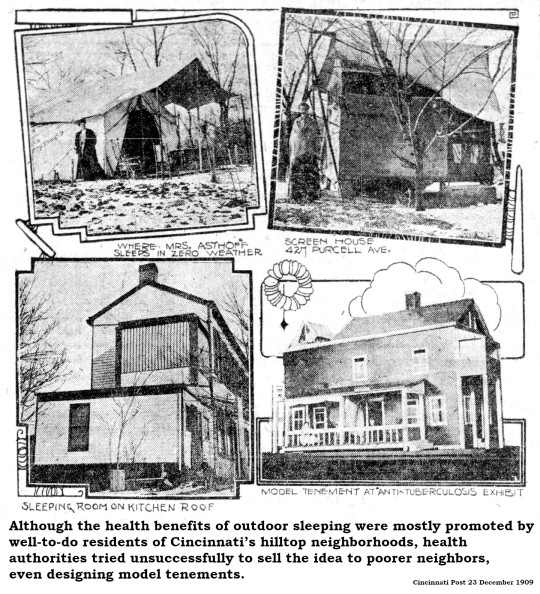
Although the poorer classes resisted the argument that shivering the night away was a grand idea, Cincinnati’s upper crust became veritable fresh-air fiends. No lesser authority than Helena Rubenstein pushed this angle in a column published in the Cincinnati Post [5 May 1922]:
“Those who have ever slept outdoors for any length of time are unanimous in their testimony that even the best ventilated sleeping room is far inferior in healthfulness to an outdoor sleeping porch, or an open tent or a window tent. Time was, not so long ago, when outdoor sleeping was prescribed only for such diseases as tuberculosis and pneumonia. Of late, the value of outdoor sleeping for well persons of all classes and ages has come to be recognized.”
Apparently, Cincinnati’s Sinton Hotel didn’t get the memo. When actress Margaret Wycherly showed up in town for a run at the Grand Opera House in January 1914, she asked the Sinton to provide her with a tent on the roof of the hotel at Fourth and Vine streets. Assistant manager Jack Brannin suggested that Miss Wycherly take a good look at the weather forecast and reconsider. Wrong answer, according to the Enquirer [5 January 1914]:
“After a short consultation with Manager [William J.] Fleming, Mr. Brannin returned with the information that Miss Wycherly could use the tent if she so desired. It will be the first time in the history of the hotel that one of the guests was permitted to sleep on the roof. Miss Wycherly, who is the wife of Bayard Veiller, the playwright, spends practically her entire time, except when in the theater, out of doors."
By December 1924, the Cincinnati Post reported that local stores prominently displayed outdoor sleeping accouterments in their windows and messages promoting outdoor sleeping were distributed via motion pictures and stereopticon slides. This gladdened the heart of Dr. Ray G. De Voist of the Anti-Tuberculosis League:
“Fresh air invigorates during sleep and night air is specially healthful. In spite of the theories of our grandparents it is even more purifying than day air as it is less laden with dust and humidity. Cold air, moreover, according to recent experiments, has been found to be even more health-giving than warm air.”
United States Surgeon General Hugh S. Cumming emphatically concurred, in an op-ed published 24 August 1925 in the Cincinnati Post:
“Every night properly spent in the out-of-doors is a health asset. Many a man who never has slept in the open, who never has experienced the feeling of well-being that results from outdoor sleeping in the fresh air, wakes from his first experience in amazement. The effects of such nights spent in the open, sleeping under the stars and in the fresh air, are truly wonderful.”
One cannot help but wonder where Dr. De Voist and Dr. Cumming really spent their hours of slumber.
You can still find references to sleeping porches among today’s real estate advertisements, although the reality of such amenities is probably analogous to that of butler’s pantries in an age when very few actually buttle. Does anybody really sleep on the sleeping porch these days?
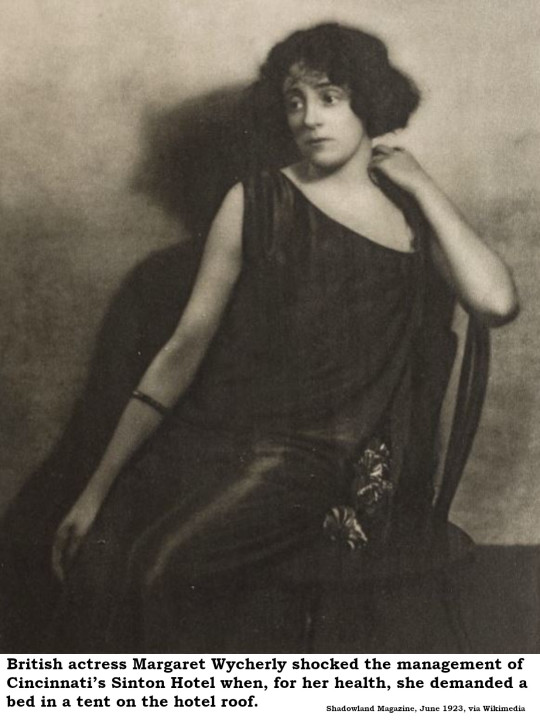
8 notes
·
View notes
Text
Here are 10 things you should know about Margaret Wycherly, born 144 years ago (or thereabouts) today. Though she focused primarily on her stage career, she left an enduring screen legacy.
#Margaret Wycherly#character actresses#old movies#classic film#classic movies#classic Hollywood#Golden Age of Hollywood#vaudeville#classic Broadway#classic TV#classic televisions#Oscar nominees
13 notes
·
View notes
Text
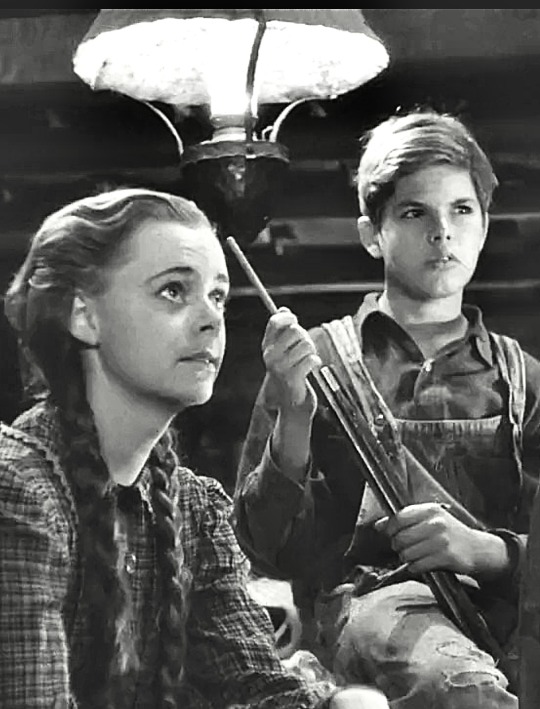
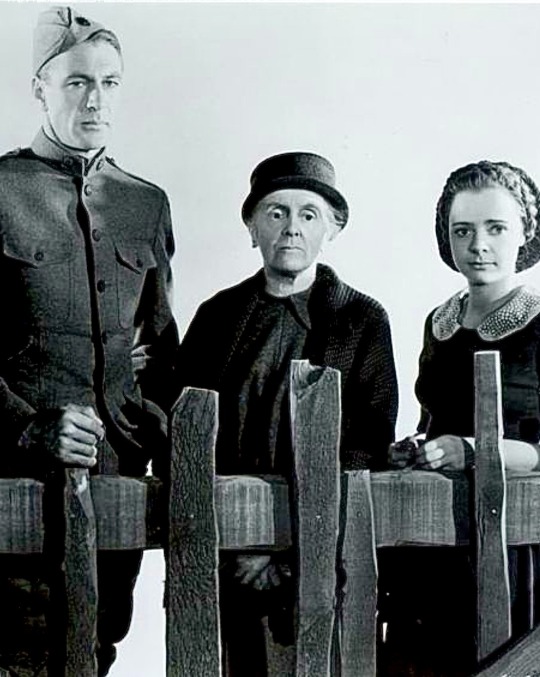
22 notes
·
View notes
Text

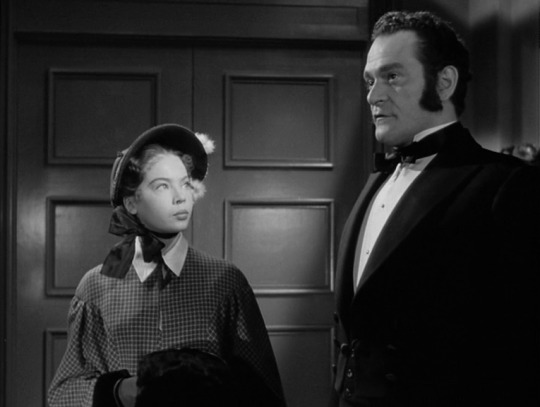


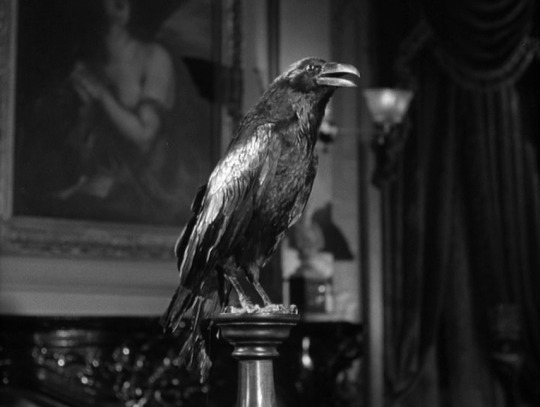

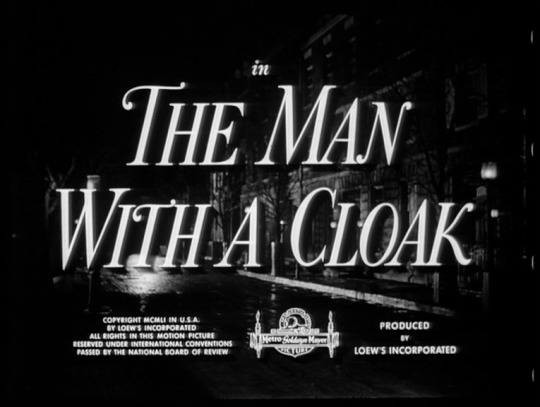

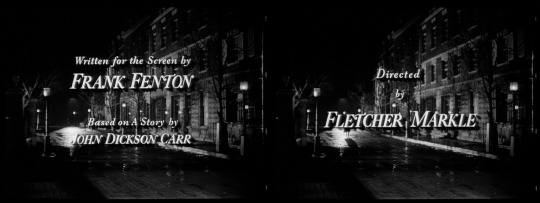
I'm in an interesting house. Handsomely upholstered in margue, with an old and dying reprobate as master, butler like a professional wrestler, and his housekeeper, she was once the toast of an era. The Man with a Cloak - Fletcher Markle (1951)
#Fletcher Markle#The Man with a Cloak#The Gentleman from Paris#John Dickson Carr#crime#thriller#Dupin#Joseph Cotten#Barbara Stanwyck#Louis Calhern#Leslie Caron#Joe De Santis#Jim Backus#Margaret Wycherly#Richard Hale#Nicholas Joy#Roy Roberts#Mitchell Lewis#Jean Inness#Francis Pierlot#François Villon
3 notes
·
View notes
Photo


White Heat (1949)
I didn’t think I liked James Cagney movies. But it could be the only one I’ve seen is Public Enemy. I liked this one. #25 in TCM’s book of 52 Essentials (Volume 1). Remember the book lists them chronologically not best to worst or vice versa.
Something about the wicked way his mother helps him do crime. And about the lack of joy Virginia Mayo gets from being the wife of a crime boss. And about the undercover cop and the small tricks and valleys he stumbles through. That totally reminded me of the scene in Reservoir Dogs when Tim Roth is on the roof rehearsing his back story. This undercover cop rehearses his back story in the police station but still he rehearses. Quentin - I bet you saw White Heat and stuck that scene away for later... didn’t you?
I want to go back to Virginia Mayo because this is the second Essential film she has been in. The first one was The Best Years of Our Lives where she plays the show-girl wife of Dana Andrews. She’s happy he’s home from the war but not so happy her life has to settle down. In White Heat she’s crass, wonton, beautiful, and bad. Her character is awesome and she does an awesome job at it.
White Heat was directed by Raoul Walsh who directed over 100 films. Extraordinary since I had never heard of him before watching this and I loved his style. What suggestions do you have for a further foray into Raoul Walsh? I’d love some input.
#white heat#james cagney#virginia mayo#raoul walsh#margaret wycherly#edmond o'brien#tcm#turner classic movies#the essentials#tcm essentials
11 notes
·
View notes
Text

#Experiment Perilous#Hedy Lamarr#George Brent#Paul Lukas#Albert Dekker#Carl Esmond#Olive Blakeney#George N. Neise#Margaret Wycherly#Jacques Tourneur#1944
0 notes
Text
Alvin York at the dinner table with Margaret Wycherly as Ma York in a publicity still for Sergeant York (1941).

View On WordPress
2 notes
·
View notes
Text
Hangmen Also Die
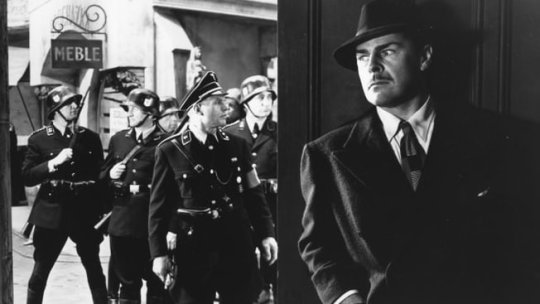
Because we were at war with Germany, Bertolt Brecht was credited with the less Teutonic “Bert” for Fritz Lang’s HANGMEN ALSO DIE (1943, TCM, Hulu, Prime, Tubi, YouTube). He was only credited for co-writing the story with Lang, though later scholars have suggested he had much more influence over the writing than previously thought. Shot when the public had no knowledge of who had killed Reinhard Heydrich, the Nazi’s commander in Bohemia and Moravia (now the Czech Republic), the film ascribes the assassination to a Czech doctor (Brian Donlevy) who’s unwittingly helped in his initial escape by the requisite sweet young thing (Anna Lee). When the Nazis fail to find the killer, they take hundreds of Czechs hostage, including Lee’s father (Walter Brennan), and start executing them until the killer comes forth.
There are lengthy discussions of whether Donlevy should sacrifice himself to save the hostages that smack of Brechtian philosophizing, particularly since there’s no right answer. There are also places where the Resistance is shown to be almost as ruthless as their occupiers, particularly a scene in which a crowd tries to stop Lee from going to the Gestapo with what she knows. But there are also a lot of complications involving Lee’s fiancé (Dennis O’Keefe), who thinks she’s having an affair with Donlevy, that reek of Hollywood. Fortunately, whenever the action flags, there’s a Lang touch — a quirk or gesture that gives a minor character more of an identity, rapid cutting to capture the plot’s repercussions on the city, a murder committed in silence and depicted through details— to liven things up.
Lee is lovely, as usual. She’s both natural and committed. Donlevy has good moments but suffers in the debate scenes, where he doesn’t seem to know what to do. The film also has strong support from Brennan along with Nana Bryant as his wife, Margaret Wycherly as his sister, Gene Lockhart as a Nazi informant, Alexander Granach as head of the Gestapo, Jonathan Hale and Byron Foulger as Resistance leaders and Lionel Stander as a Resistance fighter. German actor Hans Heinrich von Twardowski only has a few moments as Heydrich, but his body language as he sadistically dominates his underlings provides everything you need to understand the monster who helped craft the Final Solution. James Wong Howe did the cinematography and captures some wonderfully stark black-and-white images. And Brecht’s frequent collaborator, Hans Eisler did the effective score, including music for a Resistance song that runs through the film’s latter half.
Co-writer John Wexley appealed to the Writer’s Guild for sole credit and won, although at least one member of the jury called him a “credit-stealer” and said he’d only won on a technicality. Years later, HUAC labeled the film Communist propaganda, and its sole credited screenwriter was blacklisted. I think there’s a moral there somewhere.
#fritz lang#bertolt brecht#brian donlevy#anna lee#walter brennan#james wong howe#gene lockhart#lionel stander#hans eisler#reinhard heydrich#film noir
3 notes
·
View notes
Text

Linda Darnell and George Sanders in Forever Amber (Otto Preminger, 1947)
Cast: Linda Darnell, Cornel Wilde, Richard Greene, George Sanders, Glenn Langan, Richard Haydn, Jessica Tandy, Anne Revere, John Russell, Jane Ball, Robert Coote, Leo G. Carroll, Margaret Wycherly. Screenplay: Philip Dunne, Ring Lardner Jr., Jerome Cady, based on a novel by Kathleen Winsor. Cinematography: Leon Shamroy. Art direction: Lyle R. Wheeler. Film editing: Louis R. Loeffler. Music: David Raksin.
Once a famous "dirty book," Kathleen Winsor's Forever Amber wouldn't raise eyebrows or blood pressures in the average book club of today, but it was one of Hollywood's hottest properties in the 1940s. The bidding war was won by 20th Century Fox, which followed the example of Gone With the Wind by announcing a search for the actress who would play the glamorously wicked Amber St. Clair. Though the part originally went to Peggy Cummins, producer Darryl F. Zanuck finally decided that she looked too young to play the mature Amber, and when she was sidelined by illness just as filming began, she was replaced by Linda Darnell. John Stahl, the original director, left the film at the same time, and Otto Preminger stepped in. He disliked the book and asked for a script rewrite, but Preminger also delighted in trying to get things past the censors, who were all over the project. The result is a middling costume drama with too much material from the book to fit comfortably in its two-hour run time. Amber is an ambitious lass raised in a Puritan household who, when Charles II is restored to the throne, latches on to a handsome Cavalier, Bruce Carlton (Cornel Wilde), and heads for London. When Carlton is commissioned as a privateer by the king (George Sanders) and sets sail, Amber, who is pregnant with Carlton's child, is left with a little money that gets swindled away from her and lands in Newgate, the debtors' prison. She gives birth, escapes from prison, makes a living by thievery, goes on stage, attracts the eye of the king, marries an elderly earl, nurses a returned Carlton through the plague, inherits the earl's fortune when he dies during the Great Fire, and becomes the king's mistress. All of this immoral behavior should mean, under the Production Code, that she gets punished accordingly, but somehow the movie manages to finesse that with only a little emotional stress at the end. Forever Amber got condemned by the Catholic church and banned in a few places, but it was evidently bowdlerized enough to survive and make money. The truth is, it's a little dull. It comes to life occasionally when Sanders is on screen being royally wicked, but Darnell, with a blonde dye job and wig, never gets a chance to do more than be cautiously wicked and suffer prettily. The Technicolor is also rather dark and muddy, although that may be the result of an aging print.
7 notes
·
View notes
Photo

keeper of the flame (1942)
4 notes
·
View notes